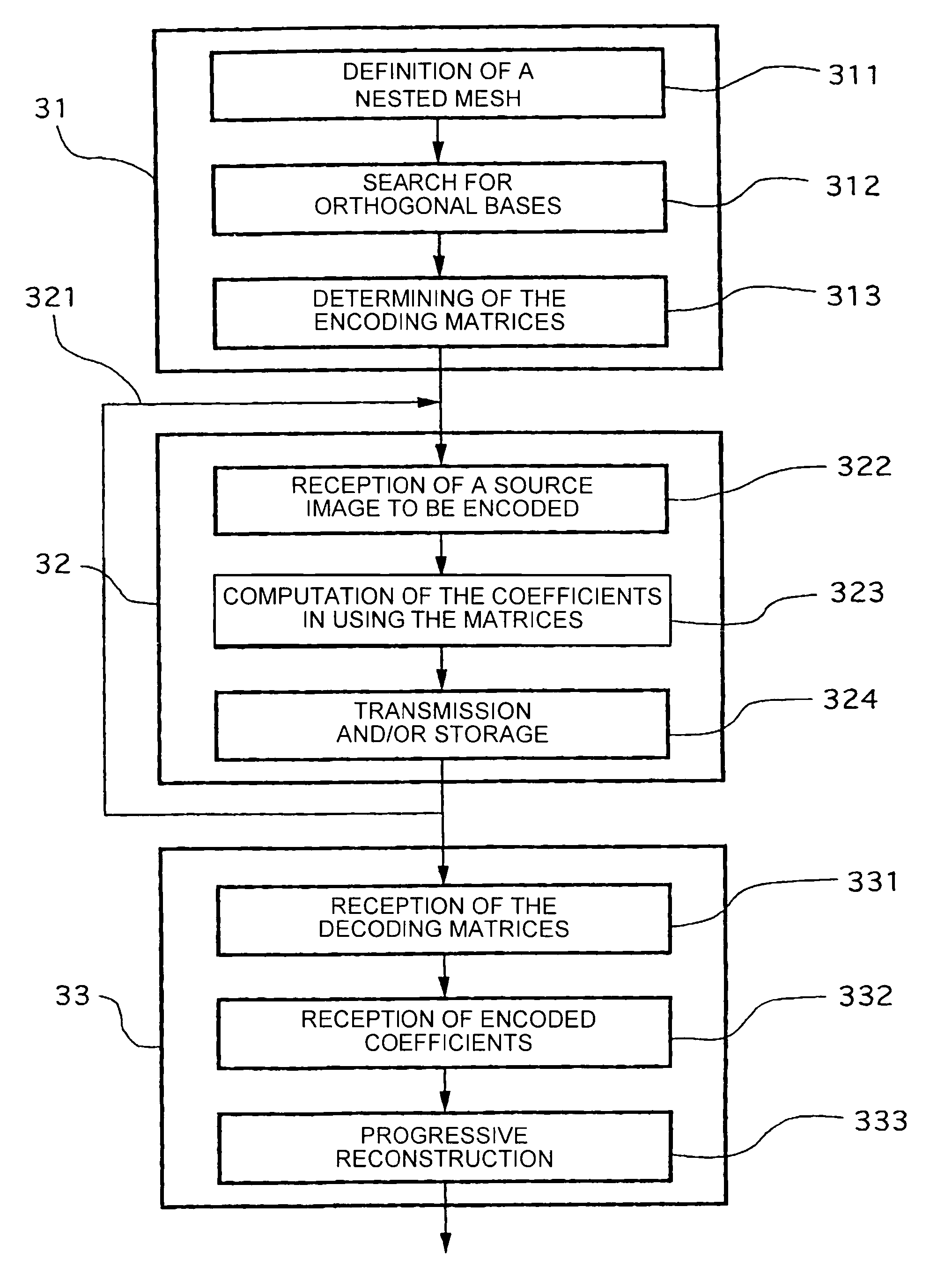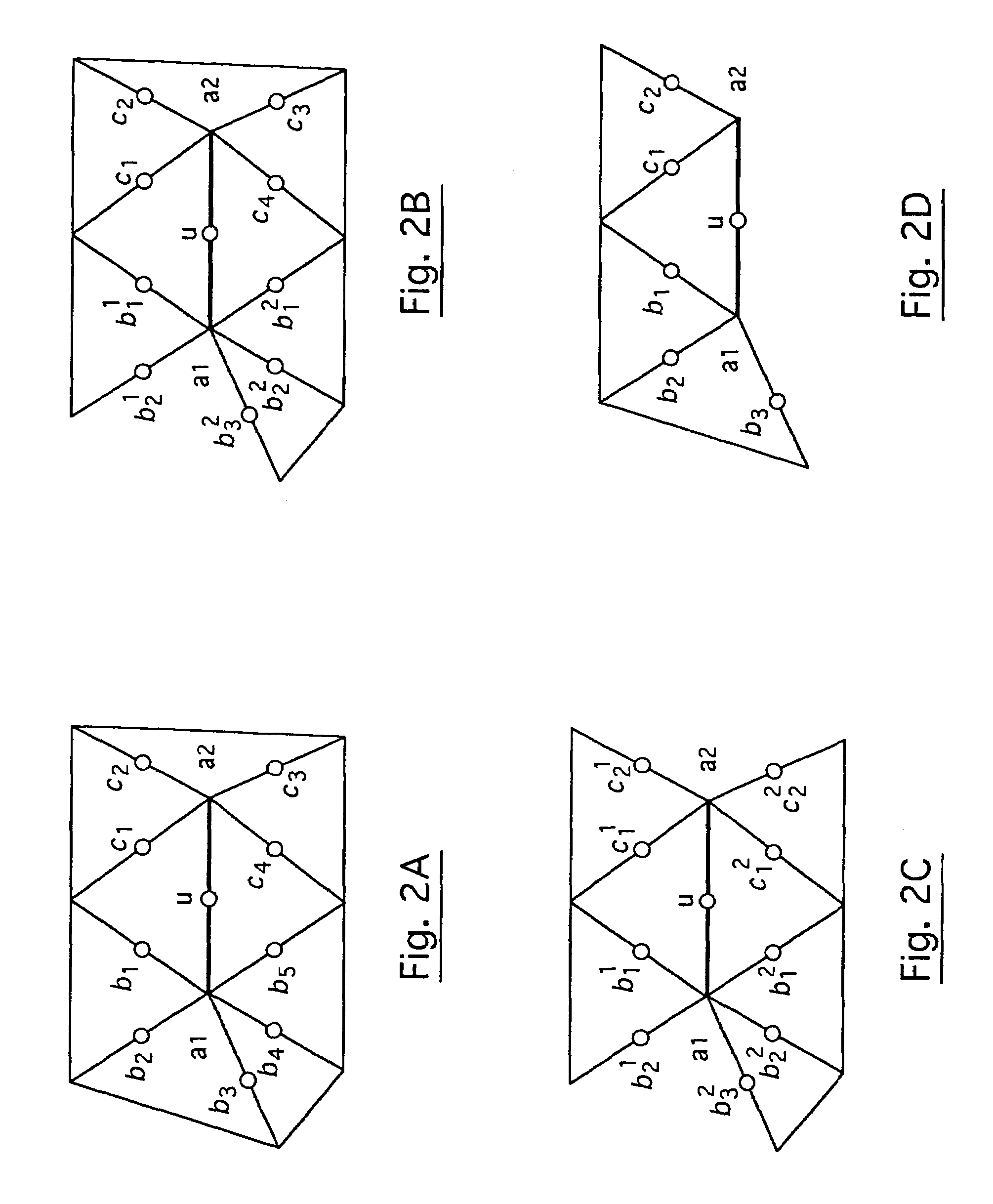Methods and devices for encoding and decoding images using nested meshes, programme, signal and corresponding uses
a technology of nested meshes and methods, applied in the field of encoding images, can solve the problems of inoptimization of approaches, inability to optimize approaches, and inability to achieve optimal quality at each level (except for the last level), and achieve the effect of optimizing the bit rate necessary
- Summary
- Abstract
- Description
- Claims
- Application Information
AI Technical Summary
Benefits of technology
Problems solved by technology
Method used
Image
Examples
second example
4. Second Example
[0149]Another example is given here of a fixed image encoding scheme as an application of the present method. The ridge-based pre-wavelets described in the appendix 1 are used here. The phase of optimization of the nodal values is common with the first example.
[0150]In this case, the wavelet coefficients are computed also through the resolution of a linear system Cx=α. To determine the coefficients of the matrix C, the following algorithm is then applied:
[0151]
For i=1,...,NpCii = 1For j as a neighbor of i in the meshCij = 1End for jEnd for iFor i= Np+1,...,Np+1Cii = U determined by the position of the corresponding ridge iCij ≠ 0 is computed for the cases determined in the previous sub-sectionEnd for i
Algorithm 2: Filling of the Matrix of Passage C.
[0152]It may be noted that this method does not entail any implementation on the edges. Indeed, the mode of construction of the pre-wavelets has taken account of the different configurations possible for any bounded mesh....
PUM
 Login to View More
Login to View More Abstract
Description
Claims
Application Information
 Login to View More
Login to View More - R&D
- Intellectual Property
- Life Sciences
- Materials
- Tech Scout
- Unparalleled Data Quality
- Higher Quality Content
- 60% Fewer Hallucinations
Browse by: Latest US Patents, China's latest patents, Technical Efficacy Thesaurus, Application Domain, Technology Topic, Popular Technical Reports.
© 2025 PatSnap. All rights reserved.Legal|Privacy policy|Modern Slavery Act Transparency Statement|Sitemap|About US| Contact US: help@patsnap.com



